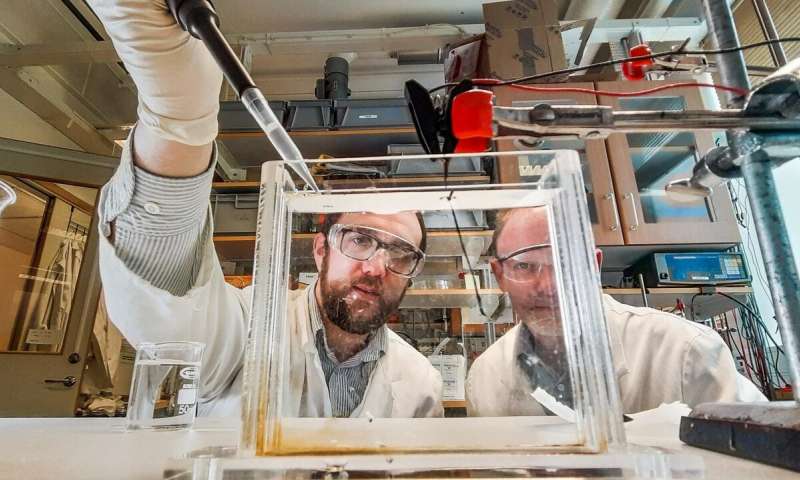Artificial muscles made of polymers can now be powered by glucose and oxygen, just like biological muscles. This new advance may be a decisive step towards grafts of artificial muscles into the human body or robots powered by biomolecules.
At Linköping University in Sweden, the study team presented their findings in the journal Advanced Materials.
The movement of our muscles is powered by energy released when glucose and oxygen are involved in biochemical reactions. Similarly, artificial actuators made of polymers can convert energy into motion. Until yesterday it was only possible with electricity, even for air robot.
Today, Swedish researchers have shown that it will be possible to move artificial muscles just like human ones. A conductive polymer, polypyrrole, which changes volume when crossed by an electric current, is the building block of the new muscles.

How does it work?
The artificial muscle, known as a “polymer actuator,” is made in layers. Three, to be precise, with two layers of polymer around a thin membrane in between. By positively charging one of the layers, the muscle contracts: with a negative charge it expands.
The electrons that cause this movement currently come from heavy batteries that need to be charged continuously. The team of scientists in Sweden exploited the technology behind bioelectrodes, which convert chemical energy into electrical energy with the help of enzymes.
“These enzymes convert glucose and oxygen. It's just like our body does. To produce the necessary energy, you don't need batteries: just immerse the muscle in the solution."
“When we integrated the enzymes on both sides of the actuator and saw it move it was amazing,” says Jose Martinez, a member of the research team.
Now what?
The next step will be to control the biochemical reactions in the enzymes, to make the movement of the muscles reversible and repeatable.
“Glucose is available in all organs of the body, it is the ideal substance.
Later we will also be able to use other enzymes to ensure that autonomous microrobots feed on the substances around them. An example? Small automatic droids to monitor the water of a lake, powered by substances present in the lake itself."
A world of "natural" machines that exploit the dynamics of biology to move. Real biorobots.


